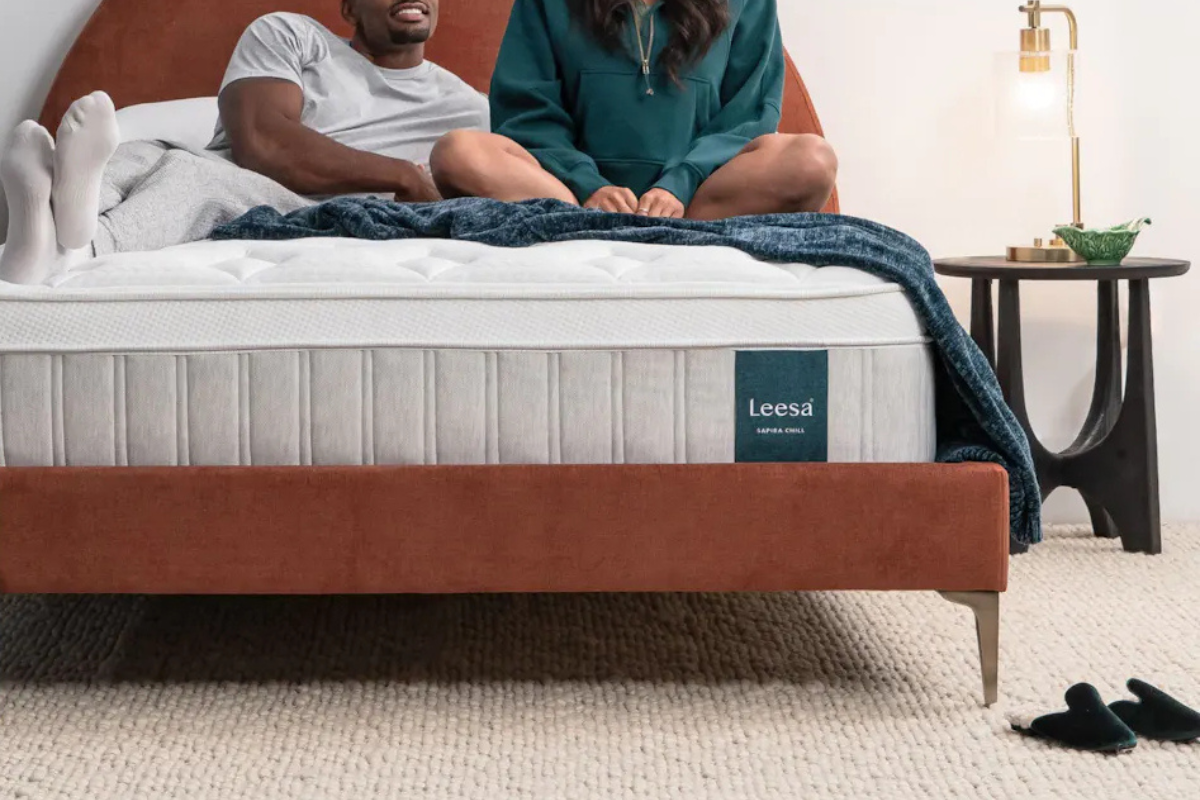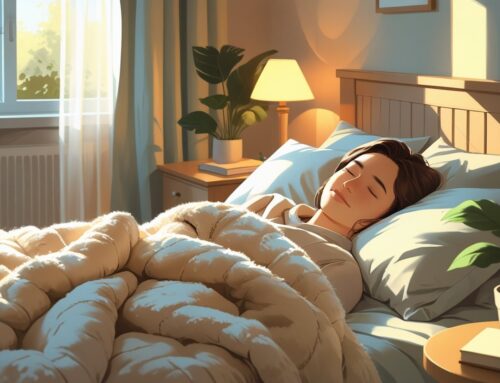Sleep plays a vital role in living a healthy life, and keeping track of it can make a big difference in how well we rest. Finding the right sleep tracker can reveal helpful insights into our sleep habits and patterns. With so many choices out there—like smartwatches or specialized sleep rings—picking one that fits your personal needs makes all the difference.
As more people look for ways to sleep better, it’s important to understand how sleep trackers actually work. These gadgets keep an eye on things like how long you sleep, which stages you go through, and even how much you move during the night. This gives you a more complete view of your sleep health. Many top-rated trackers also come loaded with smart features, offering real-time feedback and tips to help you improve.
The world of sleep tracking is moving fast. With fresh technology emerging all the time, it’s exciting to see how these tools can help us get better sleep. Whether it’s simple tracking or deep-dive analytics, today’s best sleep trackers are built to support overall well-being and make those nights more restful.
Key Takeaways
- The best sleep trackers offer detailed insights into sleep patterns.
- Understanding features helps in selecting the right sleep tracking device.
- Technology advancements continue to shape the future of sleep tracking.
- Pairing the best sleep trackers with a supportive mattress can maximize sleep quality and overall comfort.
Sleep trackers are tools designed to keep an eye on how you sleep. They gather data on different parts of your rest, like how long you sleep, how well you sleep, and the stages you go through. This helps people get a better idea of their sleep habits. There are a few types of sleep trackers to choose from:
- Wearable devices: These include smartwatches and fitness bands, like the Whoop 4.0. They typically use sensors to monitor things like movement and heart rate.
- Non-wearable devices: These track sleep without being worn—like sensors you place under your mattress.
Sleep tracking can offer helpful insights. You can see how much time you spend in stages like deep sleep and REM, which can guide you in making changes to sleep better overall.
Some popular sleep trackers include:
- Whoop 4.0: Known for giving in-depth insights and personalized tips.
- Oura Ring: Praised for its accuracy and ease of use.
- Google Pixel Watch: Stands out for its strong performance in tracking sleep data.
By using a sleep tracker, people can spot patterns and pinpoint what might be helping—or hurting—their sleep. With that knowledge, they can make smart choices to improve rest and feel better overall.
There are several types of sleep trackers available on the market today. These devices help people better understand how they sleep and make improvements where needed. The main categories include wearable sleep trackers, bedside sleep monitors, and contactless sleep sensors. Each one offers its own unique features and advantages.
Wearable Sleep Trackers
Wearable sleep trackers are among the most popular choices. They come in different styles, like smartwatches, fitness bands, and even rings. Devices such as the Oura Ring and Whoop Strap 4.0 are especially known for their accuracy when it comes to tracking sleep stages and overall sleep quality.
These gadgets monitor things like heart rate, movement, and how long you sleep. Most of them sync up with smartphone apps to give you detailed, easy-to-understand insights. They’re super convenient because you can wear them all day and night. Some even double as fitness and heart health trackers, making them extra useful.
Bedside Sleep Monitors
Bedside sleep monitors sit next to your bed instead of being worn. They often use sound or motion sensors to keep track of your sleep. Products like the Eight Sleep Pod 3 and other similar trackers also pay attention to environmental factors that affect rest.
These monitors can gather sleep data without ever touching your body. Many of them come with helpful features like temperature control and ambient sound management to make your sleep more comfortable. Some models can even connect with smart home systems, helping you create a more restful sleep setup.
Contactless Sleep Sensors
Contactless sleep sensors are another smart option for tracking sleep. These are usually tucked under your mattress or attached to your bed frame. They use technologies like radar or infrared sensors to collect data without any physical contact. These sensors track things like breathing and movement to give you a picture of your sleep patterns. They’re a great choice for anyone who doesn’t like wearing devices to bed.
Fitbit, for example, offers products in this space that do a great job of tracking sleep without getting in the way. Contactless sleep sensors are perfect for those who want a no-fuss, comfortable way to get meaningful insights into how they sleep.
When choosing a sleep tracking device, there are a few key features that really matter. These include how accurate the device is, how easy it is to use, how long the battery lasts, and how well it works with apps. Knowing what to look for can help people find a tracker that fits their sleep goals.
Accuracy and Reliability
Having accurate data is one of the most important parts of a good sleep tracker. The best devices use advanced sensors to track things like movement, heart rate, and even oxygen levels. Devices like the Oura Ring Gen3 are well-known for giving dependable insights into sleep cycles and overall sleep quality.
It’s a good idea to look for trackers that can detect different sleep stages—like light, deep, and REM sleep. This level of detail helps people really understand how they’re sleeping. Some home setups even offer near clinical-level results, which can be helpful for spotting potential sleep issues.
Ease of Use
A sleep tracker should be simple and straightforward to use. No one wants to spend too much time figuring out how to set it up. Many trackers are designed with user-friendly features and easy instructions to make things smooth from the start.
Most devices pair with smartphones through dedicated apps, so it’s easy to see your sleep data at a glance. A good app should present everything clearly—usually with helpful charts and visuals that show your progress. The best trackers just blend into your nightly routine without making things complicated.
Battery Life and Charging
Battery life can vary a lot from one sleep tracker to another. Some are built to last several days—or even a week—on a single charge, which is super handy for everyday use. That means you don’t have to worry about charging it constantly.
However, other devices might need to be charged every night, which could be inconvenient depending on your routine. It’s worth thinking about how often you’re okay with plugging in. Checking the battery details before buying ensures the tracker fits your lifestyle.
Data Integration and Apps
One of the best parts of modern sleep trackers is how well they connect with other health and fitness tools. Many of them work seamlessly with apps, giving you a full picture of your overall wellness—not just your sleep.
Some even include features like sleep coaching, offering tailored advice based on your habits. Over time, they can spot patterns and suggest ways to improve your sleep hygiene. Thanks to app integration, tracking your progress and making informed changes becomes easy and effective.
When choosing a sleep tracking device, there are a few key features that really matter. These include how accurate the device is, how easy it is to use, how long the battery lasts, and how well it works with apps. Knowing what to look for can help people find a tracker that fits their sleep goals.
Accuracy and Reliability
Having accurate data is one of the most important parts of a good sleep tracker. The best devices use advanced sensors to track things like movement, heart rate, and even oxygen levels. Devices like the Oura Ring Gen3 are well-known for giving dependable insights into sleep cycles and overall sleep quality.
It’s a good idea to look for trackers that can detect different sleep stages—like light, deep, and REM sleep. This level of detail helps people really understand how they’re sleeping. Some home setups even offer near clinical-level results, which can be helpful for spotting potential sleep issues.
Ease of Use
A sleep tracker should be simple and straightforward to use. No one wants to spend too much time figuring out how to set it up. Many trackers are designed with user-friendly features and easy instructions to make things smooth from the start.
Most devices pair with smartphones through dedicated apps, so it’s easy to see your sleep data at a glance. A good app should present everything clearly—usually with helpful charts and visuals that show your progress. The best trackers just blend into your nightly routine without making things complicated.
Battery Life and Charging
Battery life can vary a lot from one sleep tracker to another. Some are built to last several days—or even a week—on a single charge, which is super handy for everyday use. That means you don’t have to worry about charging it constantly.
However, other devices might need to be charged every night, which could be inconvenient depending on your routine. It’s worth thinking about how often you’re okay with plugging in. Checking the battery details before buying ensures the tracker fits your lifestyle.
Data Integration and Apps
One of the best parts of modern sleep trackers is how well they connect with other health and fitness tools. Many of them work seamlessly with apps, giving you a full picture of your overall wellness—not just your sleep.
Some even include features like sleep coaching, offering tailored advice based on your habits. Over time, they can spot patterns and suggest ways to improve your sleep hygiene. Thanks to app integration, tracking your progress and making informed changes becomes easy and effective.
Sleep trackers use smart technology to monitor and break down sleep patterns. They keep track of key metrics like heart rate, movement, and different sleep stages. Knowing how these devices work can help people choose the one that fits their needs best.
Sensor Technology
Most sleep trackers come packed with sensors that gather data throughout the night. Here are some of the common types you’ll find:
- Accelerometers: Track your movements to figure out your sleep position and any tossing and turning.
- Heart Rate Sensors: Pick up changes in your heart rate to help identify when you’re in REM, deep, or light sleep.
- Temperature Sensors: Some devices also track your body temperature to give more detailed info about your sleep quality.
These sensors work together to give a well-rounded picture of how you sleep. By analyzing your physical activity and internal signals, the tracker can tell what sleep stage you’re in. A lot of wearables—like smartwatches and fitness bands—include these features for all-night, hands-off monitoring.
Data Analysis
Once the tracker collects your sleep data, it runs it through smart algorithms to make sense of everything. Here’s how the analysis usually works:
- Sleep Stage Detection: The device uses your heart rate and movement to figure out which sleep stage you were in at different times.
- Sleep Quality Assessment: It looks at things like how long you slept and how often you woke up to determine your overall sleep quality.
- Personalized Insights: Many trackers offer custom reports that highlight your sleep trends and give helpful feedback.
Thanks to this analysis, you can see patterns in your sleep—like how much rest you actually need or what’s causing disruptions. Understanding how sleep tracking works makes it easier to use the data to build better sleep habits and feel more rested.
When choosing a sleep tracker, things like comfort, design, how well it works with other devices, and your budget are all important to think about. Each of these factors can really affect how satisfied you’ll be with your tracker and how well it fits into your routine.
Comfort and Design
Comfort plays a big role in how well you sleep while wearing a tracker. It’s worth thinking about the size and weight of the device. For example, a sleep tracker ring tends to be lighter and less noticeable than a wristwatch, which makes it a great option for people who don’t like wearing something bulky to bed.
Design matters too. Some people like a clean, minimal look that fits easily into their bedtime routine, while others might go for something more rugged or sporty for all-day wear. The key is finding a design that matches your lifestyle and personal style.
A good tracker should also be simple to use—easy to check or adjust without having to take it off.
Ecosystem Compatibility
How well your sleep tracker works with your other devices can make a big difference in how useful it is. Most of the top sleep tracker watches and wearables today sync smoothly with smartphones. Some models link up with popular fitness apps, which lets you see your sleep data alongside things like activity levels and heart rate. That kind of integration helps give you a clearer view of your overall health.
Before buying, it’s smart to check that the tracker works with your phone’s operating system, whether you’re using iOS or Android. Some devices can even connect with smart home features—like adjusting your lights or alarms—which can make the whole sleep experience more seamless.
Budget Considerations
Budget is another important factor when picking a sleep tracker. Prices can vary a lot depending on the type and features. For instance, a sleep tracker ring might have a higher upfront cost but could offer more accurate tracking and advanced features. Setting a budget early on can help narrow your choices. Some trackers come at lower price points and still offer the basics, while premium models include deeper insights and personalized feedback.
It’s helpful to think about which features really matter to you and find a device that offers solid value without going over your budget. Comparing a few options in your price range can lead you to a tracker that checks all the boxes—both in function and cost.
Using a sleep quality tracker can make a big difference in how well you sleep. These devices give helpful insights into your sleep patterns, making it easier to understand what’s really going on each night.
Popular sleep trackers like the Oura Ring and Whoop 4.0 are built to monitor different stages of sleep, including deep sleep and REM. With this kind of detailed information, users can make smarter choices to get better rest.
Here are a few ways sleep trackers can help:
Identifying Patterns: By keeping tabs on your sleep over time, you can spot which bedtime habits help you rest better—and which ones might be hurting your sleep.
Setting Goals: Many trackers let you set sleep targets, which can encourage you to stick to regular bedtimes and wake-up routines.
Receiving Feedback: Some devices offer tips on how to sleep better, like cooling down your room or avoiding screens before bed.
Choosing the best sleep monitoring device really comes down to personal preference. Some people like wearing a tracker on their wrist, while others go for a ring-style option that’s more low-key and comfortable. In the end, the insights you get from a sleep tracker can lead to healthier habits and help you feel more rested and energized overall.
Sleep tracking is moving forward fast. Wearable tech is changing the way people keep track of their sleep patterns. Devices like smartwatches and dedicated sleep trackers are expected to keep getting better in both accuracy and comfort.
Home sleep monitors are also gaining popularity. These offer useful insights without needing to wear anything. They can measure things like sleep quality, disruptions, and even how you breathe during the night.
Key advancements in sleep tracking may include:
- Advanced Sensors: Future trackers could come with upgraded sensors that more accurately detect different stages of sleep.
- AI Integration: Artificial intelligence might play a bigger role by giving more personalized sleep advice based on your habits.
- Health Monitoring: Sleep tracking may expand to include things like heart rate trends and stress levels for a more complete picture of health.
Many people wonder, “What is the best sleep tracker?” Right now, devices like the Oura Ring and Whoop Strap stand out because they mix smart tech with comfort. They’re also expected to keep leading the way in new innovations.
Data privacy will be more important than ever. As more personal information is collected, people will want to know their data is safe and used responsibly.
The future of sleep tracking is all about making it easier for people to get better rest. With better tools and smarter tech, improving sleep—and overall health—will feel more natural and accessible than ever before.

Even the best sleep tracker can only do so much if your sleep surface isn’t up to par. A high-quality mattress plays a major role in sleep quality and when paired with a reliable tracker, the results can be game-changing.
One standout option is the Leesa Sapira Chill Hybrid mattress. Known for its cooling technology and supportive design, this mattress helps maintain an ideal sleep environment throughout the night. It combines memory foam comfort with pocket springs for balanced support, which can reduce tossing and turning—something your sleep tracker will definitely notice.
By using a top-tier tracker alongside a mattress like the Leesa Sapira Chill Hybrid, users can gain deeper insight into how their sleep setup affects their rest. This powerful combo can highlight what’s working and what might need to change, helping users make more informed decisions for better, more restorative sleep.







